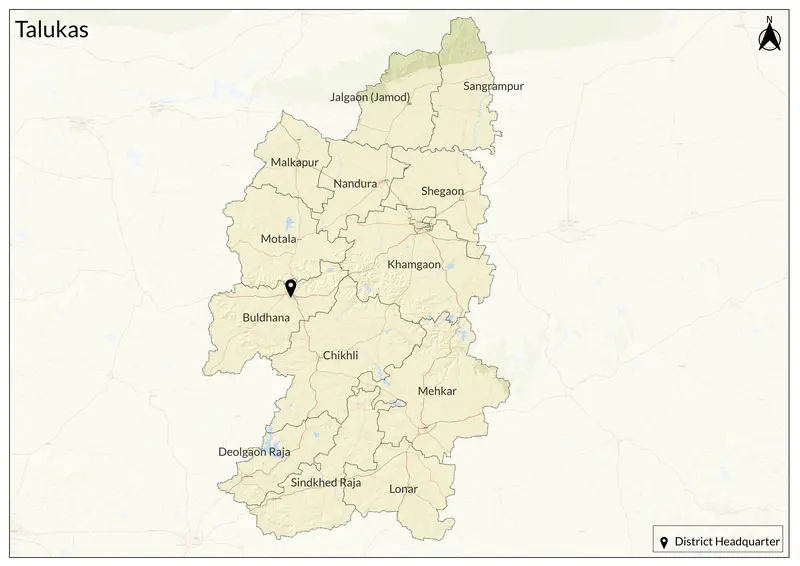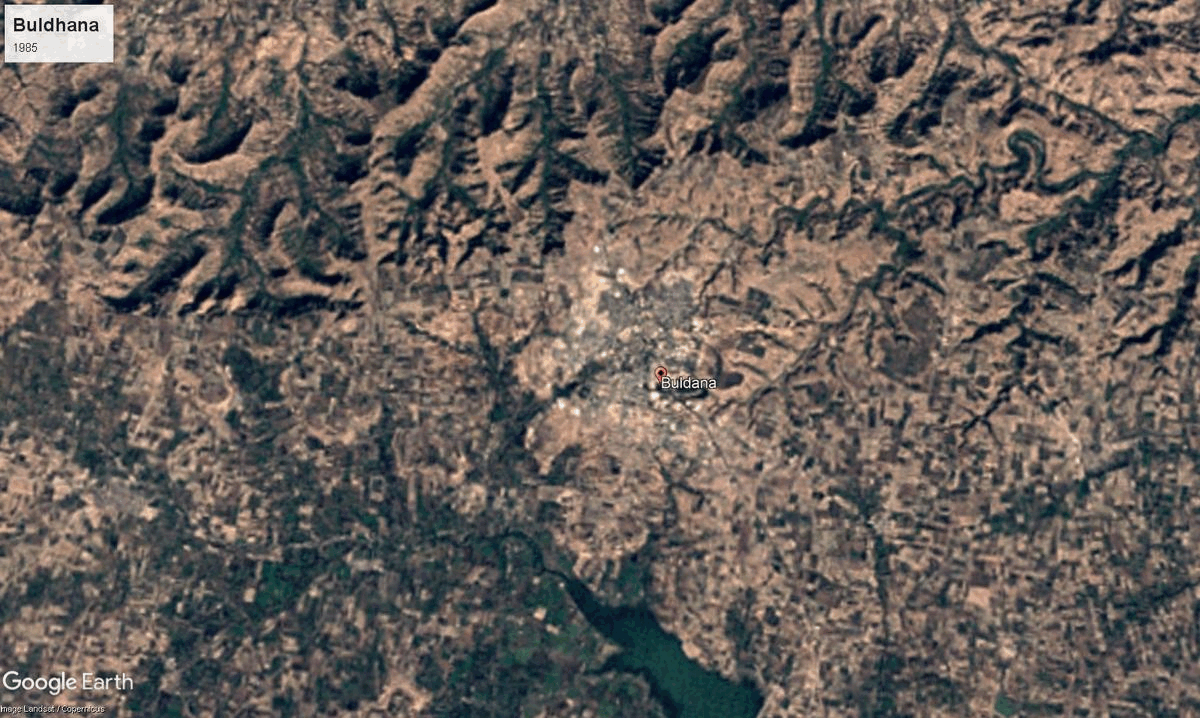Buldhana

9,661 sq. km
~27.62 lakh (2019)
934 (2011)
~ ₹22,518 crore (2019 est.)
~ ₹81,542 (2019)
The name Buldhana is believed to have originated from "Bhil Thana," meaning the "place of Bhils," an indigenous tribal community. Historically, Buldhana was part of the Vidarbha kingdom mentioned in the Mahabharata. It was ruled by several dynasties, including the Maurya Empire, Satavahanas, Vakatakas, Chalukyas, Rashtrakutas, Yadavas, and later by the Bahmani Sultanate. It eventually became part of the Nizam Shahi Sultanate and was later ceded to the Mughal Empire. In the 18th century, it became part of the Hyderabad State under the Nizam of Hyderabad. In 1853, it came under British East India Company administration. After the reorganization of states in 1956, it became part of Maharashtra in 1960.
Buldhana is known for its religious significance as the site of the Shri Gajanan Maharaj mandir in Shegaon, and Balaji Temple in Rajur Ghat, a replica of the famous Venkateswara Temple in Tirumala. Culturally, Buldhana is known for its folk arts such as Bhajan, Kirtan, and Gondhal. The district hosts the popular Chaitra Masa Suklapaksha Navami fair at Shegaon. The district is also known as the birthplace of Jijabai, the mother of Chhatrapati Shivaji Maharaj, at Sindkhed Raja.
The district is situated in the Tapi River Basin and the Godavari River Basin, with major rivers including the Purna, Nalganga, Painganga, and Khadakpurna. It lies on the Deccan Plateau and experiences a tropical climate with moderate rainfall. It is also known for the famous Lonar Crater Lake, the second largest impact crater in basaltic rock in the world. It was formed by a meteorite impact about 60,000 years ago. The lake’s water is extremely alkaline (pH of 11), yet, the site supports distinct flora and fauna adapted to these unique conditions.
The economy of Buldhana is primarily based on agriculture, with cotton, sorghum, oilseeds, soybean, sunflower, and groundnuts being the major crops. Khamgaon and Malkapur are major cotton trading towns in the district. It also has medium-sized industries and irrigation projects, with industrial areas in Khamgaon, Malkapur, Chikhli, Buldhana, Dasarkhed, and Mehkar.
